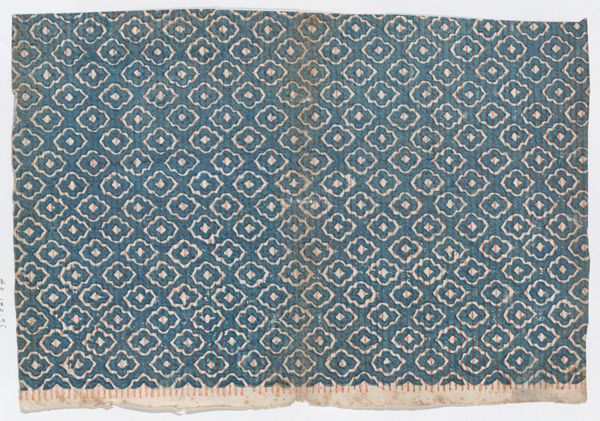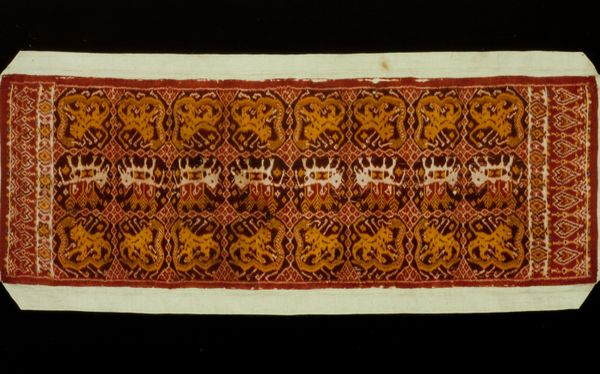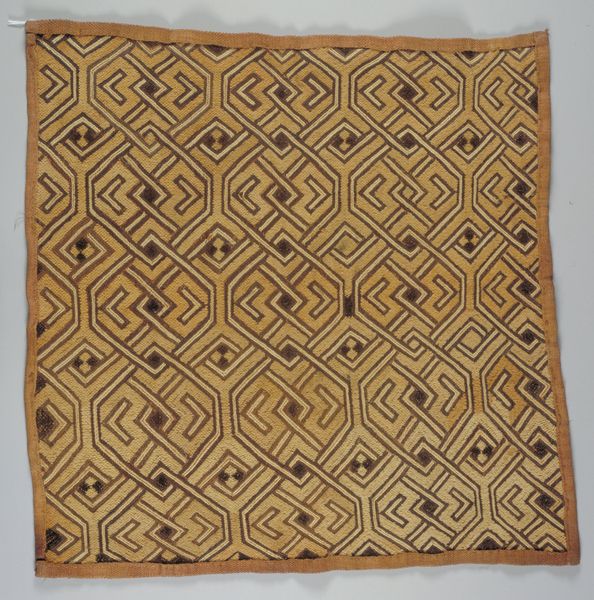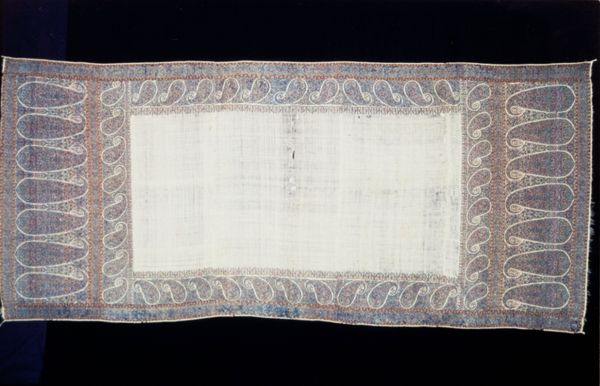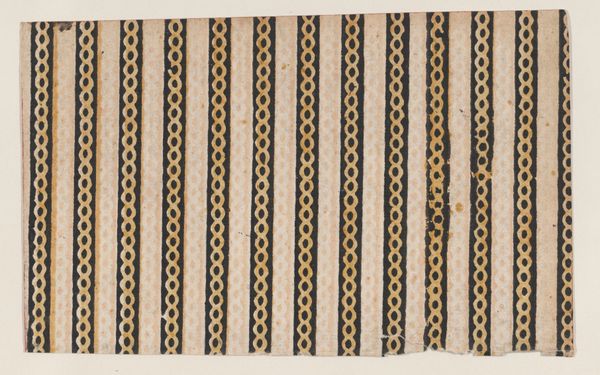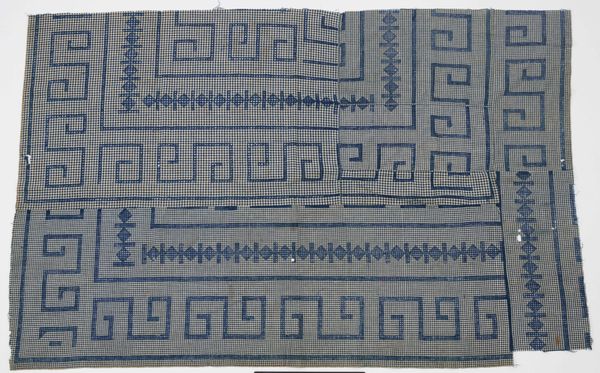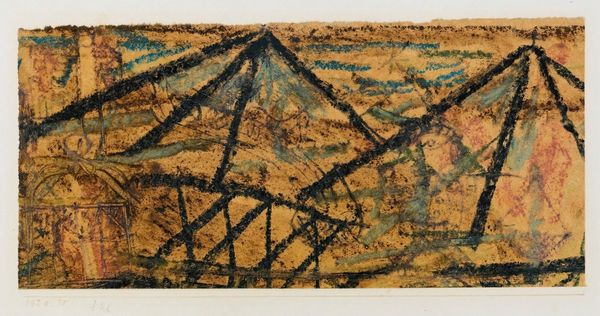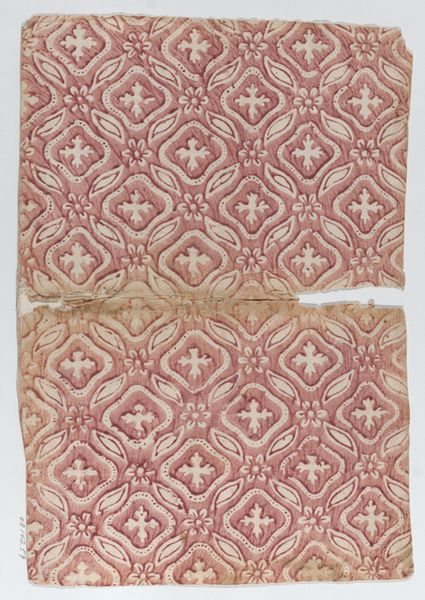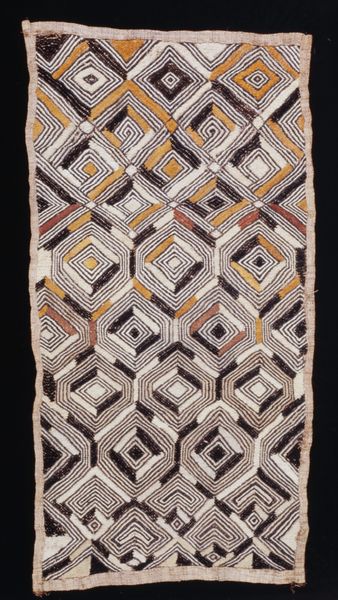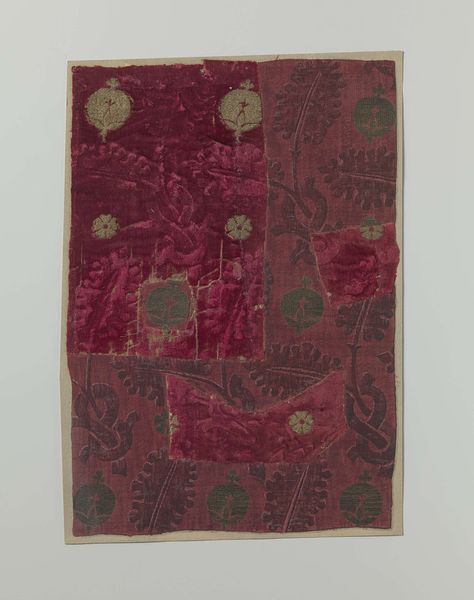
Section of Border from Thanka (Religious Picture) 18th century, Qing dynasty (1644–1911)
0:00
0:00
mixed-media, weaving, textile
#
mixed-media
#
pattern
#
asian-art
#
weaving
#
textile
#
text
#
geometric
#
china
#
decorative-art
Dimensions: 88.2 × 9.5 cm (34 3/4 × 3 3/4 in.)
Copyright: Public Domain
This section of border was crafted, likely by Manchu artisans, for use in a Thangka, a traditional Tibetan Buddhist painting. The repeating meander pattern, or Greek key, is a dominant visual symbol here, laden with meaning. This motif, which appears across the artwork, isn't confined to one time or place; it echoes through millennia. From ancient Greece, where it symbolized eternity and the unbreakable bond, to its adoption in various cultures, this pattern represents continuity and infinity. As civilizations rise and fall, the Greek key persists. Think of its echo in textiles, architectural friezes, and even modern designs, each time subtly shifting in meaning, yet carrying the weight of its origin. Its presence in a religious picture suggests a connection to the eternal, perhaps resonating with our subconscious desire for order amidst chaos. In art, symbols are not static; they are vessels of cultural memory that evolve and resurface, taking on new meanings in different contexts. This cycle reminds us that history is not linear but a perpetual return, each iteration echoing the past, always finding a place in our present.
Comments
No comments
Be the first to comment and join the conversation on the ultimate creative platform.
